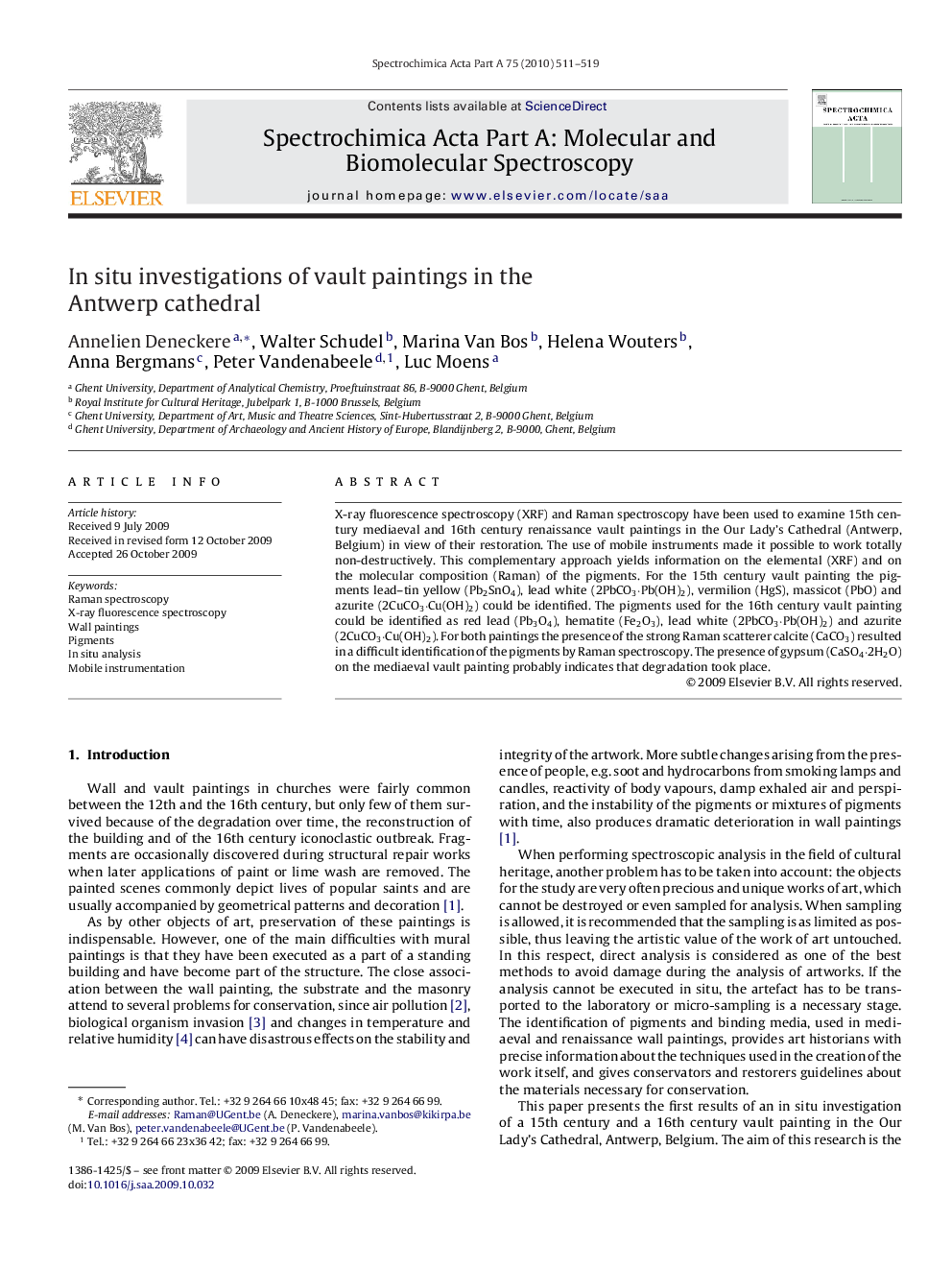| Article ID | Journal | Published Year | Pages | File Type |
|---|---|---|---|---|
| 1237176 | Spectrochimica Acta Part A: Molecular and Biomolecular Spectroscopy | 2010 | 9 Pages |
X-ray fluorescence spectroscopy (XRF) and Raman spectroscopy have been used to examine 15th century mediaeval and 16th century renaissance vault paintings in the Our Lady's Cathedral (Antwerp, Belgium) in view of their restoration. The use of mobile instruments made it possible to work totally non-destructively. This complementary approach yields information on the elemental (XRF) and on the molecular composition (Raman) of the pigments. For the 15th century vault painting the pigments lead–tin yellow (Pb2SnO4), lead white (2PbCO3·Pb(OH)2), vermilion (HgS), massicot (PbO) and azurite (2CuCO3·Cu(OH)2) could be identified. The pigments used for the 16th century vault painting could be identified as red lead (Pb3O4), hematite (Fe2O3), lead white (2PbCO3·Pb(OH)2) and azurite (2CuCO3·Cu(OH)2). For both paintings the presence of the strong Raman scatterer calcite (CaCO3) resulted in a difficult identification of the pigments by Raman spectroscopy. The presence of gypsum (CaSO4·2H2O) on the mediaeval vault painting probably indicates that degradation took place.
